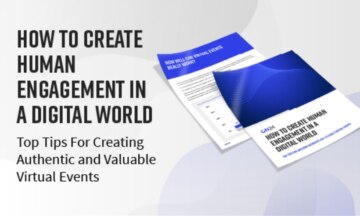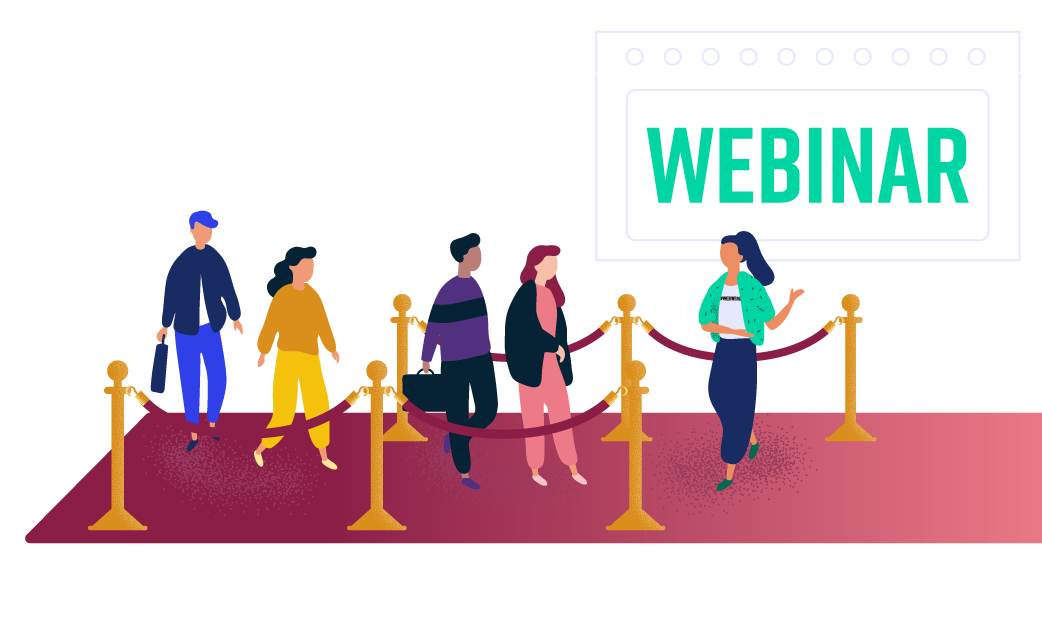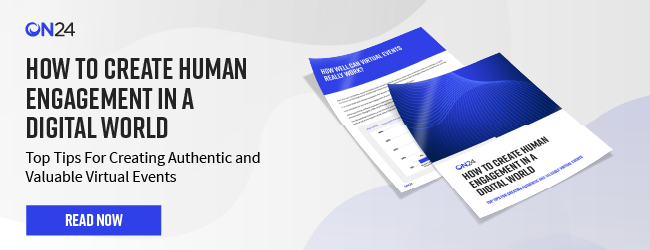3 Ways To Build Better Human Connections With Virtual Events

As last year’s special webinar benchmarks report revealed, working patterns have shifted dramatically to remote working. For B2B marketers and events specialists that have been used to bringing people together face-to-face, it’s been quite the learning curve.
It also poses a question — how can we create genuine human connections and engagement in a digital world through virtual event management?
How do top marketers use virtual events to build genuine human connections? Download the report or sign up for our on-demand webinar to find out how. [Read now]
To provide some answers, ON24 invited Chief Nation and Citrix to share what they’ve learned in the past year. The session is available on-demand and the takeaways are also featured in a summary report for easy reading.
Here are just three of the top highlights from both.
Virtual events can and do work well, but need a different approach

Any question about whether virtual experiences can really work well can be answered with a resounding “yes.” The majority of live session attendees to an ON24 poll were either somewhat or very satisfied with the customer engagement in their virtual events.
An increase in virtual experiences leads to meaningful engagement, but only if events are approached in the right way and done correctly — that is, not as a copy-and-paste replacement for face-to-face events, but carefully thought-out translations of them.
Craig McCartney (Managing Director at Chief Nation) learned the best approach when the company’s key VIP experience, Chief Wine Officer, had to be translated into a digital offering.
Their first step was recognizing that the event — which combined peer-to-peer networking and education with wine tasting — could not be simply replicated, but its most valuable characteristics could be carried over into the digital space.
Give even large events a personalized touch

Citrix made the decision early on in 2020 to commit to no in-person events for the year, a decision continuing into the first half of 2021. So, like many companies, its tactics in approaching events had to change significantly.
As Virginie Maillet (High-Touch Marketing Manager at Citrix) has seen, virtual experiences can be hugely successful when applied to ABM programs and targeted events. But Citrix learned lessons about facilitating large virtual events during its recent EMEA Work Summit, with 3,000 registrants.
One lesson was the importance of crafting relevant content for different personas. This made it so attendees could easily navigate an experience and drive more positive outcomes.
Another lesson was being imaginative with the format, and understanding that presentations might not always be what attendees want – videos, podcasts and gamification are all great ways to change up an experience to make it more personable and engaging.
Remember the human and create one-to-one conversations

A virtual experience should facilitate a one-to-one conversation. If this isn’t literally possible, it should mimic the connection and human element of such a conversation. Automation and paid channels are great for achieving at scale, but smaller events that aim to recreate networking opportunities or a high-touch experience need to make attendees feel more special and valued. If you are interested in learning more about how to improve your virtual events, why not take a look at our ultimate virtual events guide?
